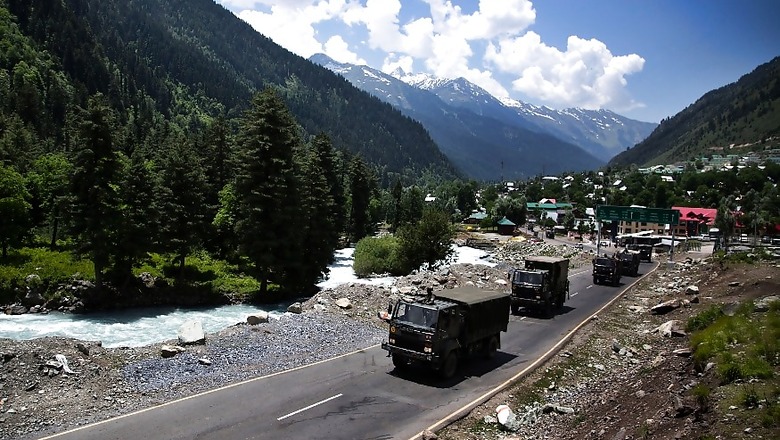
views
The Indian and Chinese armies have initiated the process of putting some physical distance between their troops at three friction points along the Line of Actual Control in Ladakh after over a two months-long border standoff.
Sources in the Indian Army told News18 that the PLA has been observed removing tents and other temporary structures erected at Patrolling Point 14 in Galwan Valley, the site of the June 15 clash. Indian troops have also observed "rearward movement of PLA vehicles" at the two other friction points – Hot Springs and Gogra.
However, officials aware of the developments, say there is no reason to celebrate just yet. "These are baby steps. The Chinese have stepped back 1.5 km and the Indian troops have also moved back a bit. But this movement is reversible. They can come back. We are watching things very closely," an officer who did not want to be named said.
The level of trust on the ground is low after the bloody clashes in Galwan that left 20 Indian soldiers and an unspecified number of Chinese soldiers dead. The clash had started after Colonel Santosh Babu, the Commanding Officer of 16 Bihar regiment, had gone to verify if the Chinese had honoured their June 5 commitment to remove tents from Patrolling Point 14.
The Army is clear it will not give the specific distance to which the PLA has relocated in Galwan or elsewhere till a thorough verification is done.
Galwan River is in spate given the snow melt in Aksai China, and sources pointed out there is a good chance that some of the disengagement at Galwan could be the Chinese merely shifting their tents and men because of it.
However, the statement issued by the Indian government after the Special Representative talks between National Security Advisor Ajit Doval and Chinese foreign minister Wang Yi on Sunday was more optimistic about de-escalation of border tensions.
"The two sides agreed that it was necessary to ensure at the earliest complete disengagement of troops along the LAC and de-escalation from the border for full restoration of peace and tranquillity," the government stated.
The Chinese statement on the talks stated: "India and China have withstood the test of ups and downs and it is not easy to achieve today's development. Not long ago what happened in the Galwan Valley is very clear. China will effectively continue to defend its territorial sovereignty."
The Indian Army also downplayed reports of disengagement at Pangong Tso where the PLA has come in till Finger 4 and built bunkers, pitched tents and even laid out a small airstrip. The PLA has denied Indian troops their ability to patrol from their forward positions till Finger 8, which India asserts lies within the LAC.
Sources say the Chinese have displayed some intent of moving back from Finger 4, but how much they are willing to step back is not clear. A senior officer said, "The PLA has not moved an inch from Pangong Tso. Removing three tents and moving back 20 vehicles is not disengagement."
In two marathon Corps Commander meetings between Lieutenant General Harinder Singh and his PLA counterpart, South Xinjiang military region chief Major-General Liu Lin, the two armies had agreed to creating a buffer zone between to reduce the risk of a skirmish or scuffle that could escalate further into a Galwan-like clash.
That would mean Indian troops pull back from their own territory as a "confidence building measure to create faith in the process."
Lt Gen DS Hooda, a former Northern Army Commander, called Monday’s development positive. "If you do not have violence, it sets the stage for a negotiation or reaching agreements. After the first Corps Commander meeting, the Army Chief had said that a phase wise dis-engagement would start from the North, that is Galwan.”
“What sabotaged it was the violence of June 15. Now by stepping back, the Chinese are sending a positive signal. Chumar, Despang and Doklam were resolved diplomatically and what helped was lack of violence," he said.
Diplomatic level talks between NSA Doval and the Chinese Foreign Minister will continue later this month, and military-level talks will also continue.
Army sources say while the process of disengagement has started, de-escalation is a long way off. They have already started stocking up for the winters for the 40,000 troops currently deployed in Eastern Ladakh against the Chinese build up.
"Till the PLA does not move out its troops and weapons from the rear, till it does not restore status quo ante by going back to where they were in early April, there will always be a threat," an officer said.


















Comments
0 comment